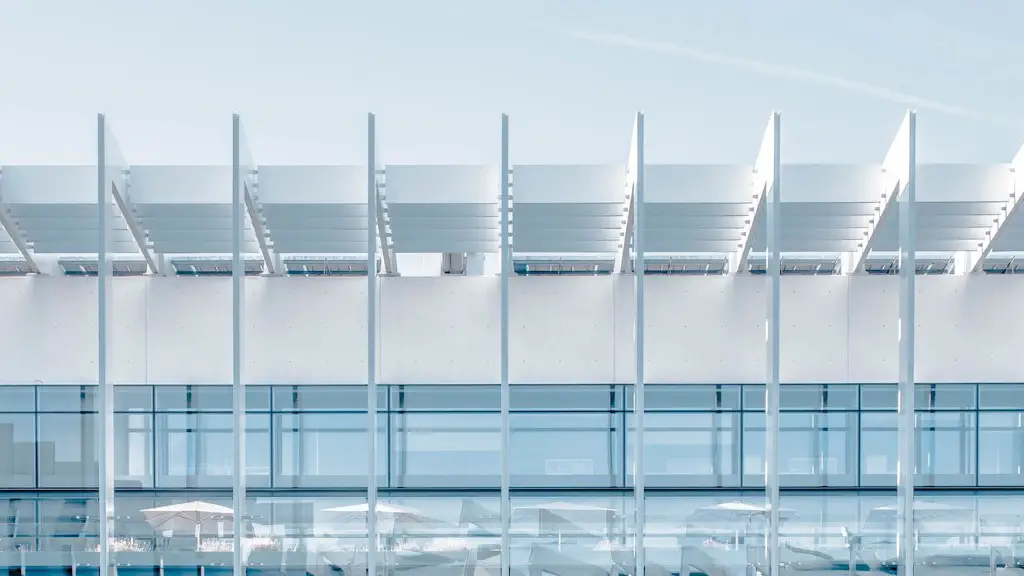What Is Expressionism In Architecture?
Expressionism in architecture is a concept that explores the different ways in which a building can be designed to convey emotion, feelings and thoughts, rather than adhere to a traditional ‘form follows function’ approach. Expressionist architecture is often characterized by bold, dynamic forms and shapes, which often appear random or disorganized upon first glance. By utilizing curved lines, distorted geometries and intense textures, these architectural pieces can often evoke intense emotion when experienced in person. Expressionist architecture can often be perceived as a departure from conventional methodologies, and does not typically adhere to formal balance or symmetry.
Highlighting Characteristics of Expressionism
Expressionist architecture has a few consistent characteristics that can be seen in a variety of designs. For instance, many Expressionist designs are often composed of abstract shapes and distorted geometries. Angles, curves, protrusions, points and other shapes are used to create a unique visual effect and can often be interpreted in different ways. Furthermore, the use of vivid colors, and intricate textures create a unique style that can be difficult to replicate and often evoke strong emotions.
In most cases, Expressionist architecture has little to no practical purpose and instead focuses solely on emotion and visual effect. This means that practical considerations such as insulation, lighting and the utilization of space often take a back seat to the artistic quality of the piece. Perhaps the best example of Expressionist architecture is that of the iconic Gugenheim Museum in Bilbao, Spain. This Frank Gehry designed masterpiece uses sleek, curved forms to create an unforgettable visual experience.
The Influence of Expressionism in Architecture
Expressionism first appeared within the fine art and music movements of the 20th century, and soon after began to find its way into the field of architecture. Architects such as Antoni Gaudi, Erich Mendelsohn, and Frank Lloyd Wright were pioneers in the Expressionist movement, utilizing their unique visions to design unconventional structures that still leave onlookers in awe.
Modern Expressionist architecture can be seen in a variety of designs; the most prominent being the unique, almost abstract designs of Spanish architect Santiago Calatrava. His curved, sophisticated designs have won him worldwide acclaim and have been used as examples to further the Expressionist movement.
The Relationship Between Expressionism and Traditional Architecture
Expressionism can often be a controversial style in the world of architecture. Some argue that Expressionists designs are far too eccentric, and lack the balance and symmetry of traditional styles. Others feel that Expressionist architecture is an essential development that allows for bold, visually striking designs that go against the grain.
In reality, the two concepts are not mutually exclusive. There are many ways to combine traditional design concepts with the aspects of Expressionism, creating a complex and visually stunning architectural piece. For example, the Centre Pompidou in Paris, designed by world famous architects Renzo Piano and Richard Rogers, manages to successfully blend Expressionist concepts within a traditional structure.
The Utilitarian Aspects of Expressionism
Architectural Expressionism often focuses on aesthetics over practicality, however, it has still found a way to be useful in day to day life. For instance, the use of curved forms can be used to manipulate air flow, improving air quality and ventilation in a structure. Additionally, the use of bold lines and shapes can be used to make a statement, such as the Peace Tower in Hiroshima which is meant to symbolize peace and hope.
Expressionism has also found use in urban planning as a way to visually break up the monotony of structures in an urban environment. Large scale structures, including malls, apartment buildings and other public structures can be designed with Expressionist elements to create an interesting visual experience for passersby.
Thematic Expressionism
Thematic Expressionism is a style of architecture which ties the design to a specific theme or concept, as a way to emphasize the message of the structure. This can be seen in the works of sculptor Jeff Koons, who often utilizes abstract shapes to create pieces of art that emphasize his message, or the works of architect Frank Gehry, who often employs the use of curves to create a unique experience. These types of designs can be hugely effective in garnering attention and communicating messages.
Criticism of Expressionism in Architecture
As with any controversial movement, Expressionist architecture has faced its fair share of criticism. Many detractors believe that Expressionism simply creates impractical structures that are often difficult to maintain, while also exploiting the public’s funding. Additionally, some feel that Expressionism is simply a passing trend, and that its unique qualities do not have the timeless quality that traditional architectural designs have.
On the other hand, those who support Expressionism argue that it encourages architects to think outside the box and create designs that emphasize the emotional aspect of a structure. They also argue that architecture that is designed without any sort of message or personality can lead to a feeling of blandness and sterility.
The Future of Expressionism
Despite the fact that Expressionism has become increasingly popular in the past few decades, it is often portrayed as a passing fad by detractors. However, the unique qualities that Expressionism brings to architecture could be viewed more as a complement than a contradiction to traditional styles. As technology advances and allows for new materials, shapes and textures to be used, the possibilities for Expressionist architecture could be endless.
Recent years have seen a significant increase in Expressionist designs, from large scale urban projects to single family homes. This could be indicative of a larger trend that sees Expressionist architecture becoming increasingly accepted and embraced. If the current trend continues, Expressionist architecture could become a staple in modern architectural design.


